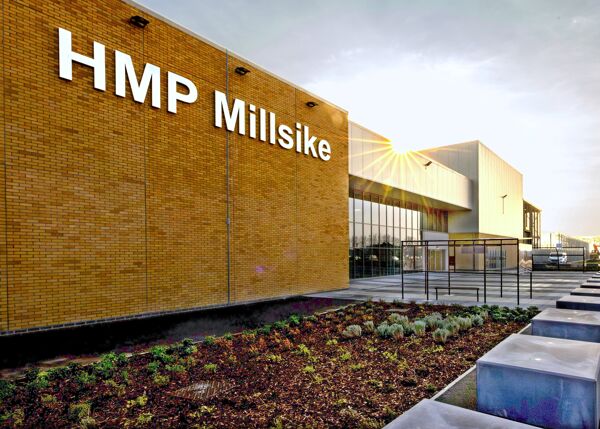
NEC contracts are being used to create the largest underground cavern complex in Hong Kong. Due for overall completion in 2031, the 14 ha complex will be the new location for the existing 340,000 m3/day Sha Tin sewage treatment works, freeing up 28 ha of land and improving odour control.
NEC Users’ Group silver member Drainage Services Department (DSD) let the 350 m main access tunnel for the caverns under a HK$811 million (£86 million) NEC3 Engineering and Construction Contract (ECC) Option D (target cost contract with bill of quantities) to China State Joint Venture in February 2019. Despite Covid-19 restrictions and the challenging nature of the work, the tunnel was completed on time and budget in December 2022.
The contract involved drilling and blasting a 26 m wide, 15.4 m high barrel-vaulted tunnel through decomposed granite and installing a sprayed concrete lining and rock bolts. It also included site formation works, a 500 m access road to the ventilation shaft site, bored pile and cantilever retaining walls, community liaison centre, steel bridge over A Kung Kok Street and realignment of Mui Tsz Lam Road. AECOM Asia Company Limited was the NEC project manager.
In July 2021 DSD also let a 6-year HK$4221 million (£447 million) NEC4 ECC Option C (target cost contract with activity schedule) to China State−Alchmex Joint Venture for the main caverns construction. Laid out on a 7 x 4 grid, the caverns are typically 32 m wide and 20 m high. Together with a 260 m long secondary access tunnel, 660 m ventilation adit, 70 m deep ventilation shaft and two 320 m long effluent pipes, the amount of rock excavated under the contract will be 2.3 million m3 in total.
The new underground sewage treatment works, which will include moving-bed biofilm reactor technology for biological sewage treatment, dissolved air flotation for solid-liquid separation, ultra-violet for disinfection and hydraulic filter presses for sludge treatment, is due be become operational in 2031.
Collaborative working
Simon Leung, the access tunnel NEC project manager’s delegate, says, "Following the NEC requirement to act in a 'spirit of mutual trust and co-operation', the access tunnel project team worked collaboratively with a common goal of delivering a modern and efficient project for the industry."
He says much of the success of the project was due to efficient communication between the project team supported by innovative technologies. "For example, traditional paper documents were replaced by a digital works supervision system, through which the project team could discuss and make decisions anywhere on site through a dedicated 5G network. Design review and site inspection in conjunction with a building information model helped the supervisor and the contractor respond quickly, accelerating overall progress."
Leung says the NEC early warning process was actively used by both parties and regular risk reduction meetings were held with the contractor and relevant subcontractors. "The resulting digital risk register provided a reliable list of potential risks that helped avoid unforeseeable issues affecting progress. It also made it easier for me to identify compensation events and issue them to the contractor for effective handling."
Leung says the project team also took the pioneering trial of adopting a blockchain technology system for managing the NEC3 ECC Option D payment process. "Called Smart Contract, the system provided an immutable data record for assessing payment in line with the schedule of cost components. This helped avoid any disputes and arguments over payment, and further reduced time and cost due to automation of the process."
Incentivising innovation
He adds that the pain/gain sharing mechanism in NEC3 ECC Option D incentivised the contractor to submit various cost-saving design proposals, resulting in a positive gain share. Cost-saving innovations included using off-site manufacturing for the retaining wall units, steel bridge, noise barriers and community liaison centre. A real-time ‘measurement-while-drilling’ system was also installed on the hydraulic drilling jumbos which, combined with Lidar scans of the tunnel face, resulted in more precise excavation. These and other innovations have been carried over into the construction of the caverns.
"With the mutual trust regime of NEC and through the use of innovate technologies, the access tunnel was completed on time and budget despite Covid-19 restrictions and the challenging nature of the work. It is an exemplar project for the construction industry, guiding the way to a smarter future."
The access tunnel project was highly commended for the 2021 NEC Water Project of the Year.
Benefits of using NEC
- NEC requirement to act in a ‘spirit of mutual trust and co-operation’ encouraged the project team to work collaboratively with a common goal.
- NEC early warning process and regular risk reduction meetings ensured that unforeseeable issues had minimal affect on progress.
- The regularly updated NEC risk register made it easier for the project manager to identify compensation events and issue them to the contractor for effective handling.
- ECC Option D pain/gain sharing mechanism incentivised the contractor to submit innovative cost-saving design proposals, resulting in a positive gain share.




